Grow Strawberries at Home and unlock a world of sweet, juicy goodness right in your backyard! Imagine plucking sun-ripened strawberries, bursting with flavor, just steps from your kitchen. Forget those bland, store-bought berries – with a few simple tricks, you can cultivate a thriving strawberry patch that will have you enjoying fresh, delicious fruit all season long.
For centuries, strawberries have been cherished for their delightful taste and health benefits. From ancient Roman gardens to the strawberry fields of California, these little red gems have captured hearts and palates worldwide. But you don’t need a sprawling farm to enjoy the magic of homegrown strawberries.
In today’s busy world, finding moments of connection with nature can be a challenge. That’s where the joy of home gardening comes in! Learning how to grow strawberries at home is more than just a fun hobby; it’s a way to de-stress, connect with the earth, and provide your family with healthy, delicious food. Plus, who doesn’t love the satisfaction of nurturing a plant from tiny seedling to bountiful harvest? This DIY guide will equip you with the knowledge and simple hacks you need to create your own thriving strawberry haven, no matter the size of your space. Let’s get started!
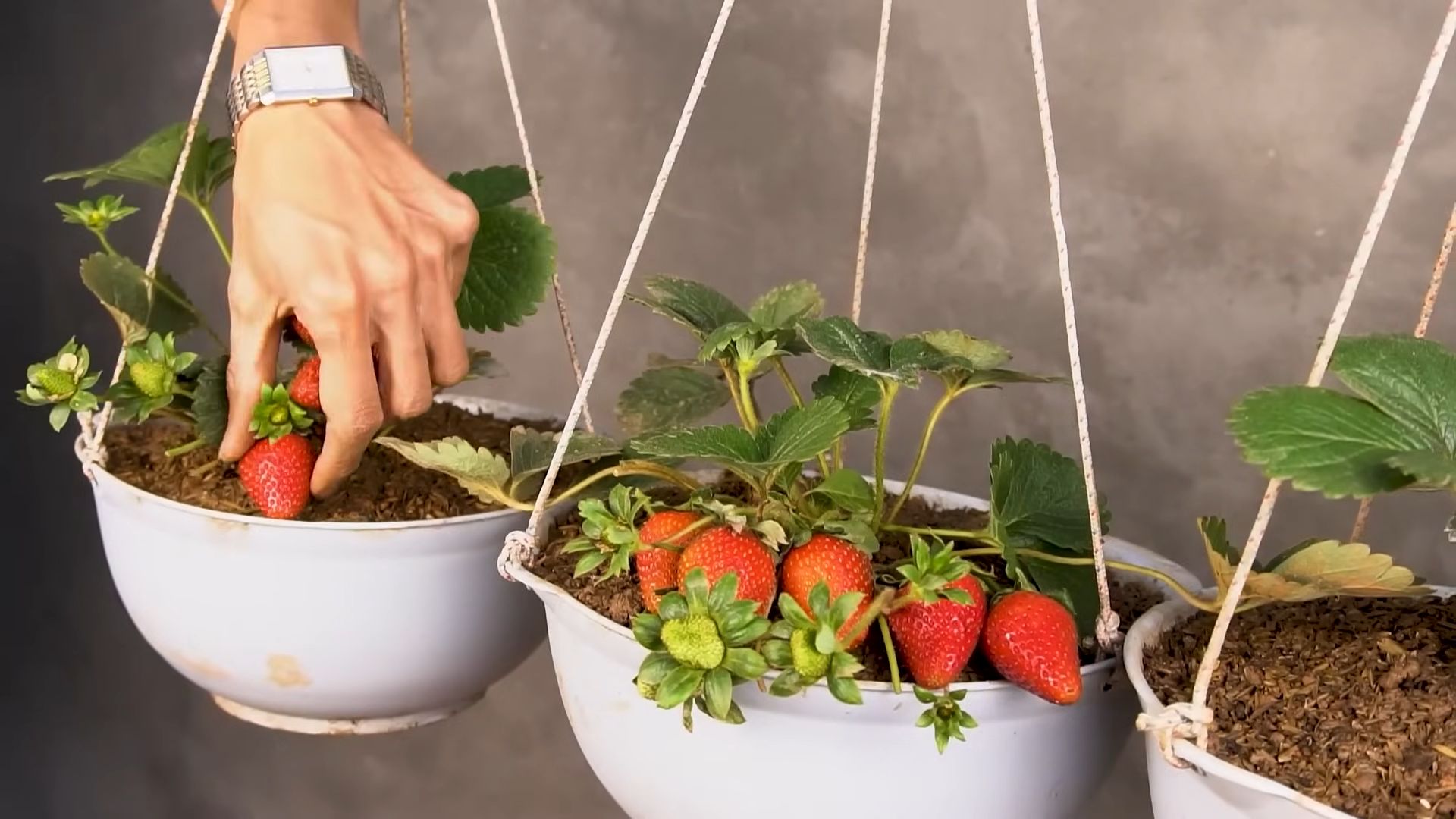
Grow Your Own Delicious Strawberries: A DIY Guide
Hey there, fellow gardening enthusiasts! I’m so excited to share my tried-and-true method for growing plump, juicy strawberries right at home. Forget those bland, store-bought berries – nothing beats the taste of homegrown goodness! This guide will walk you through everything you need to know, from choosing the right variety to harvesting your sweet rewards. Let’s get started!
Choosing the Right Strawberry Variety
Before we dive into the nitty-gritty, let’s talk about strawberry varieties. There are three main types, and understanding their differences is key to a successful harvest:
* June-Bearing: These varieties produce one large crop of strawberries, typically in late spring or early summer (hence the name!). They’re great if you want a big batch for jam-making or freezing. Popular June-bearing varieties include ‘Chandler,’ ‘Honeoye,’ and ‘Earliglow.’
* Everbearing: Don’t let the name fool you – everbearing strawberries don’t produce fruit continuously. Instead, they have two or three distinct harvests throughout the growing season, usually in spring, summer, and fall. ‘Ozark Beauty’ and ‘Seascape’ are popular everbearing choices.
* Day-Neutral: These varieties are the most consistent producers, yielding fruit throughout the growing season as long as temperatures are moderate. They’re less sensitive to day length than June-bearing or everbearing types. ‘Albion’ and ‘San Andreas’ are excellent day-neutral options.
My Recommendation: For beginners, I often suggest starting with day-neutral varieties like ‘Albion’ or ‘San Andreas.’ They’re relatively easy to care for and provide a steady supply of strawberries throughout the season.
Preparing Your Strawberry Patch
Now that you’ve chosen your variety, it’s time to prepare your strawberry patch. Strawberries thrive in well-drained, slightly acidic soil with a pH between 5.5 and 6.5.
* Sunlight: Strawberries need at least 6-8 hours of direct sunlight per day. Choose a location that gets plenty of sun.
* Soil Testing: I highly recommend testing your soil’s pH before planting. You can purchase a soil testing kit at most garden centers or send a sample to your local agricultural extension office.
* Soil Amendment: Amend your soil with plenty of organic matter, such as compost, aged manure, or peat moss. This will improve drainage, aeration, and nutrient content.
* Weed Removal: Remove all weeds from the planting area. Strawberries don’t compete well with weeds, so it’s important to start with a clean slate.
Planting Your Strawberry Plants
Okay, the fun part! Planting your strawberry plants. You can purchase strawberry plants as bare-root plants or potted plants. Bare-root plants are typically cheaper, but potted plants are easier to establish.
Step-by-Step Planting Instructions:
1. Soak Bare-Root Plants: If you’re using bare-root plants, soak the roots in water for about 30 minutes before planting. This will help rehydrate them.
2. Dig Holes: Dig holes that are large enough to accommodate the roots of your strawberry plants. Space the holes about 12-18 inches apart for June-bearing varieties and 8-12 inches apart for everbearing and day-neutral varieties.
3. Planting Depth: This is crucial! The crown of the plant (where the roots meet the stem) should be level with the soil surface. Planting too deep can cause the crown to rot, while planting too shallow can dry out the roots.
4. Spread the Roots: Gently spread the roots out in the hole.
5. Backfill with Soil: Backfill the hole with soil, gently firming it around the roots.
6. Water Thoroughly: Water the newly planted strawberries thoroughly.
7. Mulch: Apply a layer of mulch around the plants to help retain moisture, suppress weeds, and keep the berries clean. Straw, pine needles, or wood chips are all good options.
Caring for Your Strawberry Plants
Now that your strawberries are planted, it’s time to provide them with the care they need to thrive.
* Watering: Strawberries need consistent moisture, especially during fruit production. Water deeply whenever the top inch of soil feels dry. Avoid overhead watering, as this can promote fungal diseases. Drip irrigation is ideal.
* Fertilizing: Fertilize your strawberry plants in early spring with a balanced fertilizer (e.g., 10-10-10). Follow the instructions on the fertilizer package. You can also side-dress with compost or aged manure.
* Weed Control: Regularly remove any weeds that pop up around your strawberry plants.
* Runner Management: June-bearing strawberries produce runners (stems that grow horizontally and develop new plantlets). If you want to maximize fruit production, remove the runners as they appear. Everbearing and day-neutral varieties produce fewer runners, but you can still remove them if you prefer.
* Pest and Disease Control: Keep an eye out for common strawberry pests and diseases, such as slugs, snails, aphids, and fungal diseases. Use organic pest control methods whenever possible. I’ve had good luck with diatomaceous earth for slugs and snails.
* Bird Protection: Birds love strawberries just as much as we do! Protect your berries with netting or row covers.
Growing Strawberries in Containers
Don’t have a garden? No problem! You can easily grow strawberries in containers.
* Container Selection: Choose a container that is at least 12 inches in diameter and 8 inches deep. Hanging baskets are also a great option for strawberries.
* Potting Mix: Use a high-quality potting mix that drains well.
* Planting: Plant your strawberry plants in the container, following the same planting depth guidelines as for in-ground planting.
* Care: Container-grown strawberries need more frequent watering and fertilizing than in-ground plants. Water whenever the top inch of potting mix feels dry, and fertilize every 2-3 weeks with a balanced liquid fertilizer.
* Overwintering: In colder climates, you’ll need to protect your container-grown strawberries from freezing temperatures. You can move them to a sheltered location, such as a garage or shed, or wrap the containers with burlap.
Harvesting Your Strawberries
The moment you’ve been waiting for! Harvesting your delicious strawberries.
* Ripeness: Strawberries are ready to harvest when they are fully red and slightly soft to the touch.
* Harvesting Technique: Gently twist or cut the strawberry from the plant, leaving a small piece of the stem attached.
* Harvest Frequency: Harvest your strawberries every few days, as they ripen quickly.
* Storage: Store your freshly harvested strawberries in the refrigerator. They’re best eaten within a few days.
Troubleshooting Common Strawberry Problems
Even with the best care, you might encounter some problems along the way. Here are a few common issues and how to address them:
* Small Berries: Small berries can be caused by insufficient sunlight, poor soil, or lack of water. Make sure your strawberries are getting enough sun, amend your soil with organic matter, and water regularly.
* Lack of Fruit: Lack of fruit can be caused by poor pollination, frost damage, or nutrient deficiencies. Ensure good air circulation around your plants to promote pollination, protect them from frost, and fertilize regularly.
* Fungal Diseases: Fungal diseases, such as gray mold, can be a problem in humid conditions. Improve air circulation, avoid overhead watering, and use a fungicide if necessary.
* Pest Infestations: Keep an eye out for common strawberry pests, such as slugs, snails, aphids, and spider mites. Use organic pest control methods whenever possible.
Extending the Strawberry Season
Want to enjoy fresh strawberries for as long as possible? Here are a few tips for extending the strawberry season:
* Choose a Mix of Varieties: Plant a combination of June-bearing, everbearing, and day-neutral varieties to spread out the harvest.
* Use Row Covers: Row covers can protect your strawberries from frost in the spring and extend the harvest into the fall.
* Succession Planting: Plant new strawberry plants every few weeks to ensure a continuous supply of berries.
Propagating Strawberry Plants
Once you have a thriving strawberry patch, you can easily propagate new plants from runners.
1. Select Runners: Choose healthy runners with well-developed roots.
2. Potting: Place the runner in a small pot filled with potting mix.
3. Anchor the Runner: Anchor the runner to the potting mix with a paperclip or hairpin.
4. Water: Water the runner regularly.
5. Sever the Runner: Once the runner has developed a strong root system, sever it from
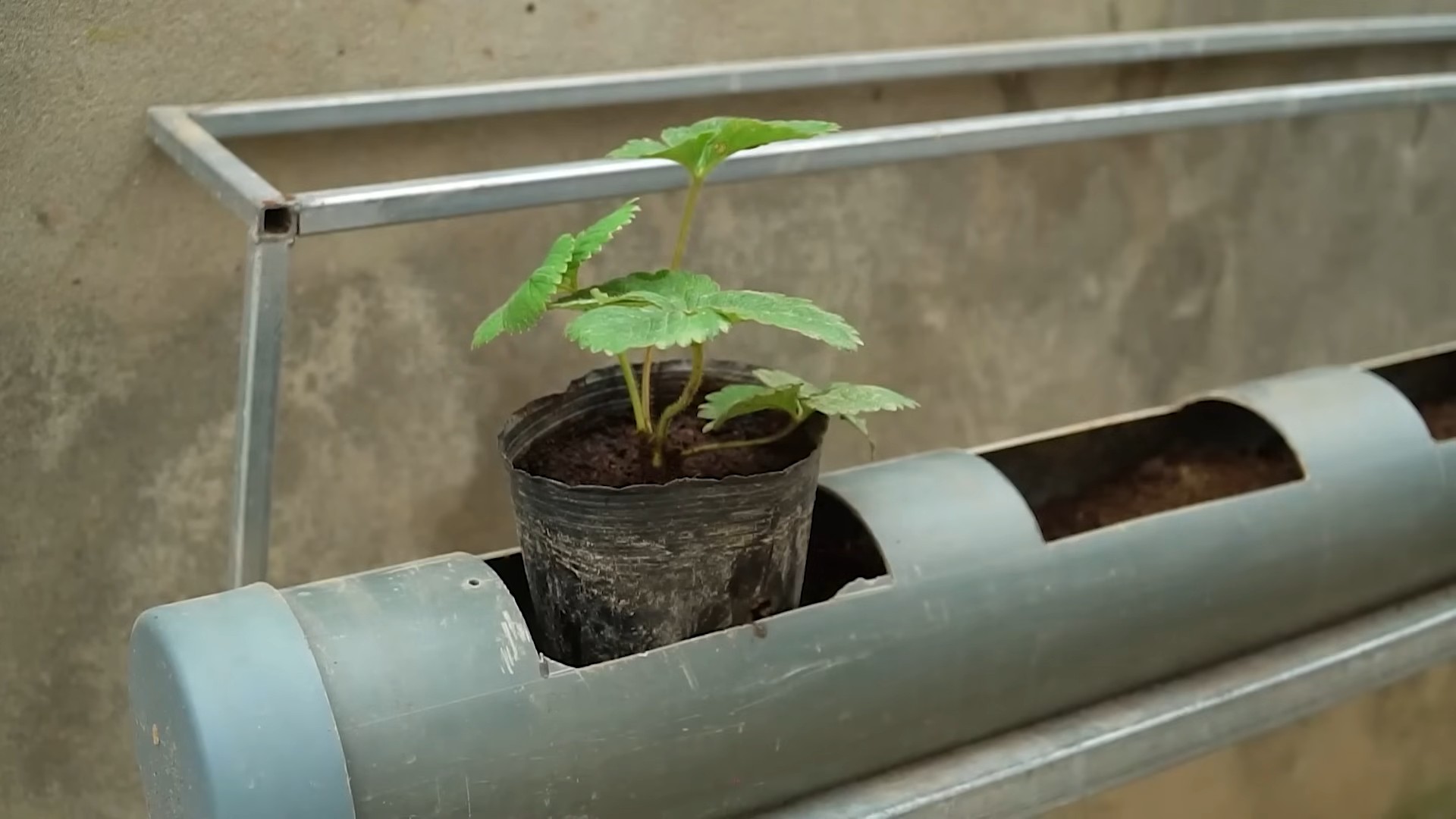
Conclusion
So, there you have it! Growing strawberries at home, especially using our simple DIY trick, is more than just a gardening project; it’s an investment in fresh, flavorful, and organic goodness right at your fingertips. Forget those bland, store-bought berries that lack the vibrant taste of sunshine and homegrown love. With this method, you’re not just growing strawberries; you’re cultivating an experience.
Why is this DIY approach a must-try? Because it’s accessible, cost-effective, and incredibly rewarding. Whether you have a sprawling garden or a tiny balcony, you can adapt this technique to suit your space. It’s a fantastic way to involve children in the process, teaching them about where their food comes from and fostering a love for nature. Plus, imagine the satisfaction of serving a dessert made with strawberries you nurtured from tiny seedlings to juicy, red perfection.
But the beauty of this method lies in its adaptability. Feel free to experiment! Try different varieties of strawberries to discover your personal favorite. Everbearing varieties will give you multiple harvests throughout the season, while June-bearing types offer a concentrated burst of flavor. Consider companion planting with herbs like basil or thyme, which can help deter pests and enhance the flavor of your strawberries. You can also adjust the soil mix to suit your local climate and conditions. For example, if you live in a particularly dry area, adding more moisture-retentive materials like coco coir can be beneficial.
Don’t be afraid to get creative with your containers! While we’ve outlined a basic method, you can use anything from repurposed plastic bottles to hanging baskets to create a unique and visually appealing strawberry garden. The key is to ensure proper drainage and adequate sunlight.
We are confident that this DIY trick will transform the way you think about growing strawberries. It’s a simple, effective, and enjoyable way to bring the taste of summer into your home.
Now, it’s your turn! We wholeheartedly encourage you to give this DIY trick a try. Start small, experiment, and most importantly, have fun. Once you’ve harvested your first batch of homegrown strawberries, we’d love to hear about your experience. Share your photos, tips, and any variations you’ve tried in the comments below. Let’s build a community of strawberry enthusiasts and spread the joy of homegrown goodness! We are sure you will love to grow strawberries at home.
Frequently Asked Questions (FAQ)
What is the best time of year to start growing strawberries?
The best time to plant strawberries depends on your climate and the type of strawberry you’re growing. In general, early spring (after the last frost) or early fall are ideal times. Spring planting allows the plants to establish themselves before the heat of summer, while fall planting gives them a head start for the following spring’s harvest. For everbearing varieties, you can often plant them throughout the growing season, as long as you provide adequate water and protection from extreme temperatures. Check your local climate zone and consult with a local nursery for the best planting time in your area.
What kind of soil do strawberries need?
Strawberries thrive in well-drained, slightly acidic soil with a pH between 5.5 and 6.5. The soil should be rich in organic matter to provide essential nutrients and retain moisture. Before planting, amend your soil with compost, well-rotted manure, or other organic amendments to improve its fertility and drainage. Avoid heavy clay soils, as they can become waterlogged and lead to root rot. If you have clay soil, consider growing your strawberries in raised beds or containers with a suitable potting mix.
How much sunlight do strawberries need?
Strawberries need at least 6-8 hours of direct sunlight per day to produce a bountiful harvest. Choose a location that receives full sun for most of the day. If you live in a particularly hot climate, some afternoon shade can be beneficial to prevent the plants from overheating. Insufficient sunlight can result in smaller berries and reduced yields.
How often should I water my strawberry plants?
Water your strawberry plants regularly, especially during dry periods. The soil should be consistently moist but not waterlogged. Water deeply and less frequently, rather than shallowly and often. Avoid overhead watering, as this can promote fungal diseases. Instead, water at the base of the plants or use a soaker hose. During hot weather, you may need to water daily. Check the soil moisture regularly by sticking your finger into the soil. If the top inch feels dry, it’s time to water.
What are some common pests and diseases that affect strawberries, and how can I prevent them?
Common pests that affect strawberries include slugs, snails, aphids, and spider mites. Diseases include gray mold (Botrytis), powdery mildew, and root rot. To prevent these problems, practice good garden hygiene. Remove dead leaves and debris regularly, and ensure good air circulation around the plants. Use organic pest control methods, such as introducing beneficial insects or using insecticidal soap. Avoid overwatering to prevent root rot. Choose disease-resistant varieties of strawberries whenever possible.
How do I fertilize my strawberry plants?
Fertilize your strawberry plants in early spring, before they start producing flowers. Use a balanced fertilizer that is specifically formulated for berries. Follow the instructions on the fertilizer package carefully. Avoid over-fertilizing, as this can lead to excessive foliage growth and reduced fruit production. You can also amend the soil with compost or other organic matter to provide a slow-release source of nutrients.
How do I harvest strawberries?
Harvest strawberries when they are fully ripe and red. The berries should be firm and easily detach from the plant. Pick them in the morning, after the dew has dried. Handle the berries gently to avoid bruising them. Store them in the refrigerator for up to a week.
Can I grow strawberries in containers?
Yes, strawberries are well-suited to container gardening. Choose a container that is at least 12 inches deep and wide. Use a well-draining potting mix and ensure that the container has drainage holes. Water regularly and fertilize as needed. Container-grown strawberries may need more frequent watering than those grown in the ground.
How do I overwinter my strawberry plants?
In colder climates, strawberry plants need protection during the winter. After the first frost, mulch the plants with straw or pine needles to insulate the roots. You can also cover the plants with a row cover or cold frame. In very cold climates, you may need to move container-grown strawberries to a sheltered location, such as a garage or shed. Remove the mulch in the spring, after the last frost.
What are some different varieties of strawberries I can grow?
There are three main types of strawberries: June-bearing, everbearing, and day-neutral. June-bearing varieties produce a large crop of berries in early summer. Everbearing varieties produce two or three crops of berries throughout the growing season. Day-neutral varieties produce berries continuously throughout the growing season, regardless of day length. Some popular varieties include ‘Chandler,’ ‘Seascape,’ ‘Albion,’ and ‘Earliglow.’ Choose varieties that are well-suited to your climate and growing conditions.


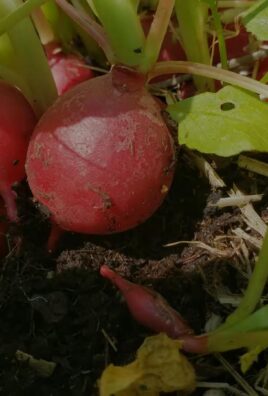
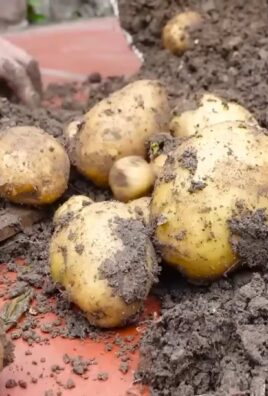
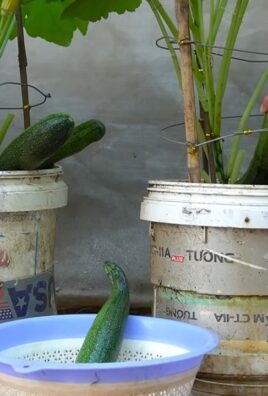
Leave a Comment